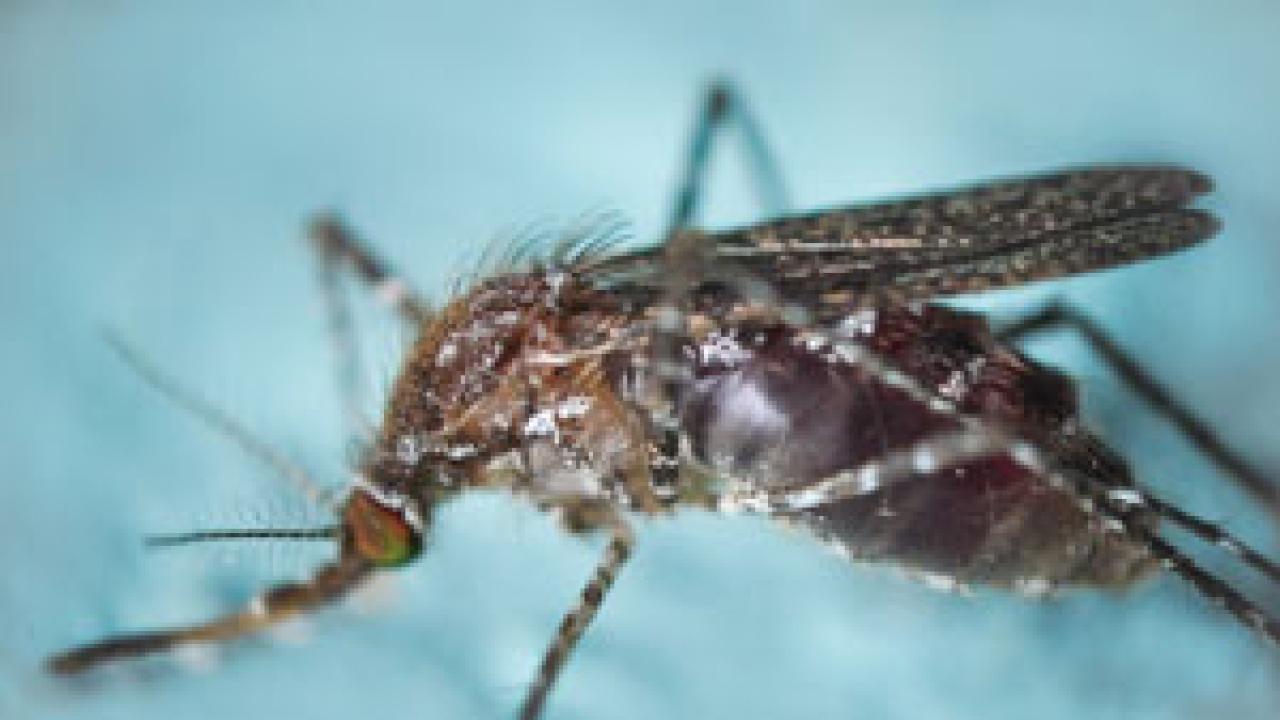
Malaria is a serious disease, causing an estimated 214 million cases and half a million deaths globally in 2015. Predicting the spread and outbreaks of malaria is a complicated affair: malaria-causing parasites are spread through mosquito bites, and mosquitoes need water to breed and multiply. As a result, public health experts take a detailed interest in the weather: more rain can lead to more mosquitos, resulting in more malaria cases.
But scientists are finding that this relationship is not so simple: some intense rain events can flush mosquito larvae out of breeding sites and reduce malaria risk. The amount of rain, but also the rate of rain, the soil composition, and the topography all affect the resultant pools and puddles available as mosquito bedding grounds. ICTP climatologist Adrian Tompkins and his collaborators have worked to integrate all these factors, and more, into a model of how malaria spreads and infects people.
Those climatologists' expertise is vital, because the interplay of climate factors is complicated. Temperature is key: warmer temperatures speed up the mosquitoes' life cycles, while slightly cooler temperatures mean whole areas are free from the disease. But again, the relationship is complicated: as temperatures get really warm, approaching 40C, mosquitos can't survive. Climate change adds a lot of uncertainty to this equation, because it may shift the boundaries of malaria-affected zones. All of these factors mean that predicting rainfall and temperature variations could give valuable advance warning of outbreaks.
Those complications are why Tompkins dove into studying this: how climate variables affect malaria transmission intensity as well as causing sudden outbreaks. He created a malaria transmission model, known as VECTRI, to help predict these outbreaks, and now shares it as free open-source software for scientists and health ministries worldwide. "Not many climatologists are involved in this kind of application yet," says Tompkins, "but there are a lot of nuances in predicting malaria that the latest seasonal forecast and climate models can help fill in."
As a climatologist, Tompkins specializes in sub-seasonal predictions. Predicting if a whole monsoon season will be rainier than seasons past is useful, but knowing when the rains will come--that there will be rain three weeks from now but not six weeks — can be even more helpful. That type of information, unsurprisingly, is highly useful for predicting malaria outbreaks.
Those improved prediction abilities would allow doctors and officials to better prepare for epidemics. With more lead time from seasonal predictions, malaria nets can be distributed or teams organized to treat rural habitations with insecticidal sprays, and more staff and medical supplies can be readied for an influx of cases. For planning over longer timescales, such as the next few decades, predictions could help planning land management schemes or health clinic needs. Despite the widespread creation of national climate adaption plans, the public health implications of climate change are still rarely considered in more local urban and rural development schemes.
"With any new project, I like to get familiar with what my collaborators do, and that's what I was doing five years ago in the EU-funded project called QWeCI (Quantifying the impacts of weather and climate on health in developing countries) when I realized that public health researchers often use very simplified statistical models, only accounting for average temperatures and rainfall. These simple models can only be applied where high quality health data exists," Tompkins explains. Although some more complex, dynamic models did exist, there was a problem: "The second discovery," Tompkins continued, "was that these were not freely available. There was no open-source dynamical model available to the community that accounted for climate." Tompkins decided to take the current knowledge of the climate-malaria relationships and write his own open source code to donate to the research community in Africa and beyond. That effort, starting back in 2011, turned into the open-source VECTRI model, a malaria-specific tool now in use all over the world.
VECTRI (VECToR borne disease community model of ICTP) is designed specifically for the climate impact on vector-borne human disease. It has a scale of 10km and predicts the rate of clinical cases per 1000 people. But standing water and temperatures are not the only important factors for predicting outbreaks. Immunity levels within a population, the population density, and a whole host of socio-economic factors such as access to health care facilities are important for assessing the overall disease burden in a community. Population mobility also plays a role: people moving from high to low transmission zones can bring the parasites with them. Temperature, hydrology, socio-economic settings, population density, immunity levels, and migration patterns are all integrated in VECTRI model development. The current version is driven by monthly and seasonal forecasts from the ECMWF, European Centre for Medium-Range Weather Forecasts in additional to a wide range of climate models that contribute to the IPCC process.
To date, VECTRI has been downloaded over 50 times worldwide, used today by research groups and in the near future, health ministries. All of these groups can use Tompkins' model because of its open-source designation; sharing the work to be built on and applied is a natural extension of ICTP's mission to help opening doors for developing-country scientists. While climatologists may not often dive into applications for their models, Tompkins and VECTRI's success suggests how fruitful this type of collaboration can be.
References:
http://journals.plos.org/plosone/article?id=10.1371/journal.pone.0150626
http://users.ictp.it/~tompkins/vectri/
--Kelsey Calhoun
















